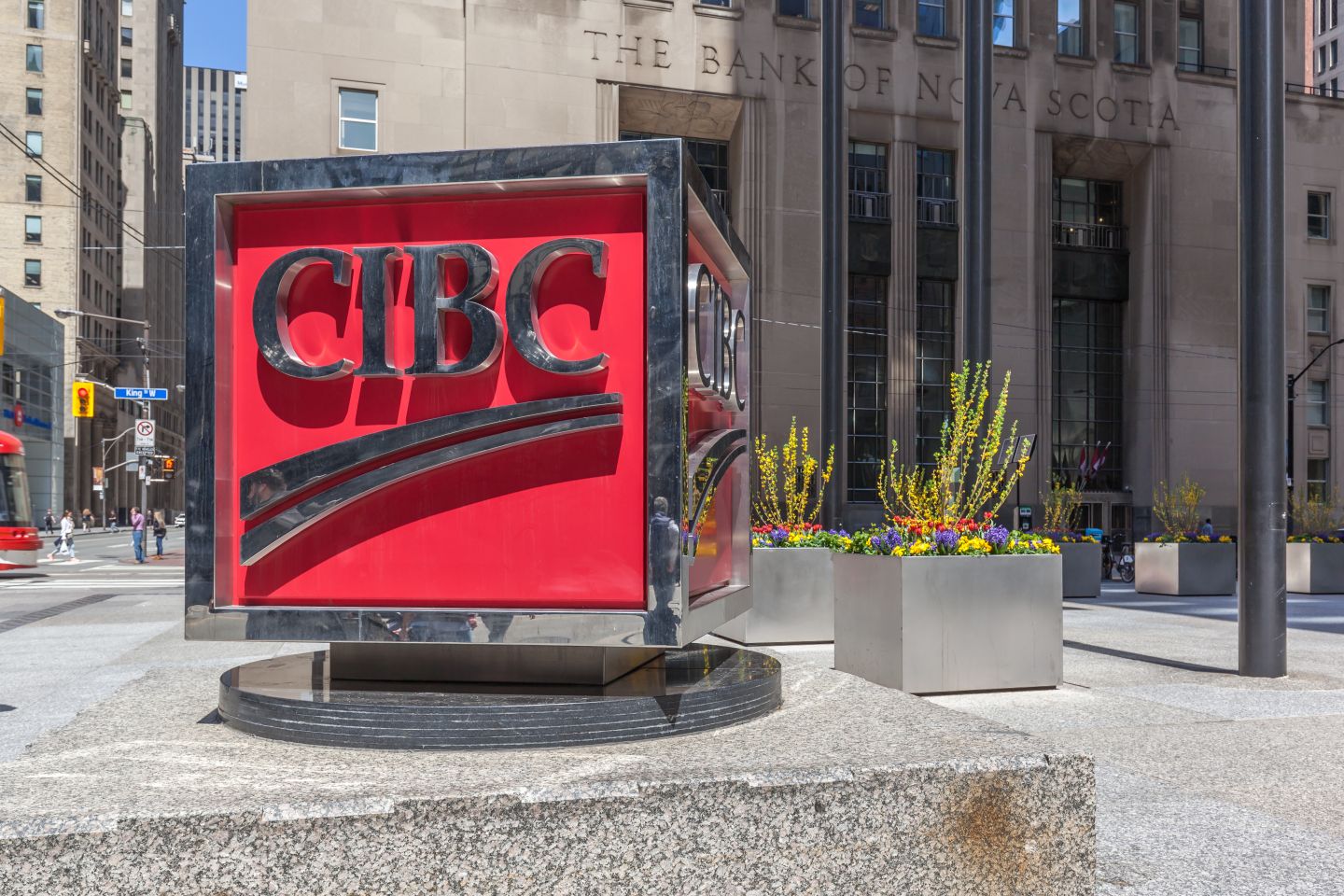CIBC stock split: will Canadian Imperial Bank of Commerce shares split again?
The Canadian Imperial Bank of Commerce (CIBC) has a long history of adjusting its share structure, including several stock splits designed to improve liquidity and broaden accessibility. While no new split has been announced as of November 2025, recent activity related to its Canadian Depositary Receipts (CDRs) has attracted renewed interest from market participants.
The last traditional Canadian Imperial Bank of Commerce (CM) stock split took place in 2022, and since then no new split involving its common shares has been confirmed. However, a separate event in 2025 affected only Canadian Depositary Receipts (CDRs) issued by CIBC, not the bank’s regular shares.
In this article, we outline CIBC’s share-split history, review the most recent developments, and explain how these events fit into the bank’s broader market activity.
Past performance is not a reliable indicator of future results.
What is a stock split?
A stock split occurs when a company increases the number of its outstanding shares by issuing additional ones to existing shareholders. While the number of shares rises, the company’s total market value remains unchanged, as the price per share adjusts proportionally.
For example, in a two-for-one split, shareholders receive one additional share for each one they already hold, while the share price halves. This keeps the company’s market capitalisation and each shareholder’s ownership proportion the same.
Stock splits are often used to enhance liquidity by lowering the trading price, making the shares appear more accessible to a wider pool of investors.
What is CIBC?
The Canadian Imperial Bank of Commerce is one of Canada’s leading financial institutions, serving over 13 million clients across Canada, the US and internationally.
Formed through the 1961 merger of the Canadian Bank of Commerce and the Imperial Bank of Canada, CIBC operates through four main business divisions:
- Canadian personal and business banking
- Canadian commercial banking and wealth management
- US commercial banking and wealth management
- Capital markets
As of 2025, CIBC remains under the leadership of Victor G. Dodig, who has served as CEO since 2014.
CIBC stock split history
Since its formation in 1961, CIBC (CM) has approved four traditional common-share splits and, more recently, one affecting its CDRs.
| Year | Type | Ratio | Notes |
|---|---|---|---|
| 1967 | Common shares | Split | First split |
| 1986 | Common shares | Split | Second split |
| 1997 | Common shares | Split | Third split |
| 2022 | Common shares | 2-for-1 | Most recent traditional split |
| 2025 | CDRs only | Split | Applied to CDRs, not CM shares |
The most recent common-share split occurred on 13 May 2022, when CIBC issued one additional share for each held, effectively halving its trading price on both the Toronto Stock Exchange (TSX) and the New York Stock Exchange (NYSE).
No new common-share split has been announced since.
CIBC’s 2025 CDR splits
In November 2025, CIBC announced splits for four series of Canadian Depositary Receipts (CDRs) – covering Broadcom, Oracle, Palantir and Uber. These began trading on a split-adjusted basis on 14 November 2025.
Each existing CDR was subdivided into several new ones (for example, Broadcom CDRs underwent a six-for-one split).
These CDR splits did not affect CIBC’s traditional shares and had no impact on the bank’s underlying equity or shareholder structure. Investors’ total notional value remained the same, and brokerage accounts were adjusted automatically.
What are Canadian Depositary Receipts (CDRs)?
CDRs are investment instruments introduced by CIBC to give Canadian investors exposure to global companies’ shares in Canadian dollars. Each CDR represents a fraction of an underlying foreign share, offering a built-in notional currency hedge that helps offset exchange-rate risk between the Canadian dollar and the issuer’s local currency.
The 2025 CDR split aimed to lower trading prices and improve accessibility, but it does not represent a split of CIBC’s own shares.
When could another CIBC stock split occur?
At present, no traditional CIBC common-share split is planned or under review. The 2022 split was the first in 25 years, suggesting that such actions are infrequent and typically linked to long-term price performance rather than short-term fluctuations.
If the share price were to rise significantly over time, the board might revisit the option to improve liquidity. For now, CIBC’s share structure has remained unchanged since 2022.
Key takeaways
CIBC has not announced another stock split for its common shares since May 2022. The most recent event – the November 2025 CDR split – applied only to depositary receipts and did not affect regular CIBC shares.
Past performance is not a reliable indicator of future results.
Create an account Open a demo account
FAQ
Will CIBC stock split again?
There are currently no indications that the Canadian Imperial Bank of Commerce (CIBC) plans another common-share split. The last traditional split took place in May 2022, and no new event has since been announced or approved. A separate split in November 2025 applied only to CIBC-issued Canadian Depositary Receipts (CDRs), not to the bank’s regular shares.
How many times has CIBC stock split?
CIBC has carried out four traditional common-share splits — in 1967, 1986, 1997 and 2022. In 2025, a fifth split was introduced for CDRs only, not for the bank’s ordinary shares.
When did CIBC last split its stock?
The most recent traditional stock split took place on 13 May 2022, when CIBC approved a two-for-one division of its common shares. More recently, in November 2025, the bank split several series of its Canadian Depositary Receipts – including Broadcom, Oracle, Palantir and Uber – which did not affect its common stock.
Can you trade CIBC stock as a CFD?
Yes, CIBC shares are available as contracts for difference (CFDs) on some trading platforms that provide access to Canadian-listed equities. CFD trading enables you to speculate on CIBC’s price movements without owning the underlying shares. CFDs are traded on margin, and leverage amplifies both profits and losses.